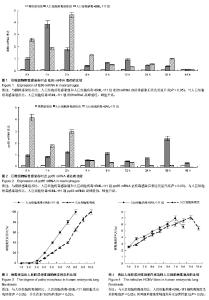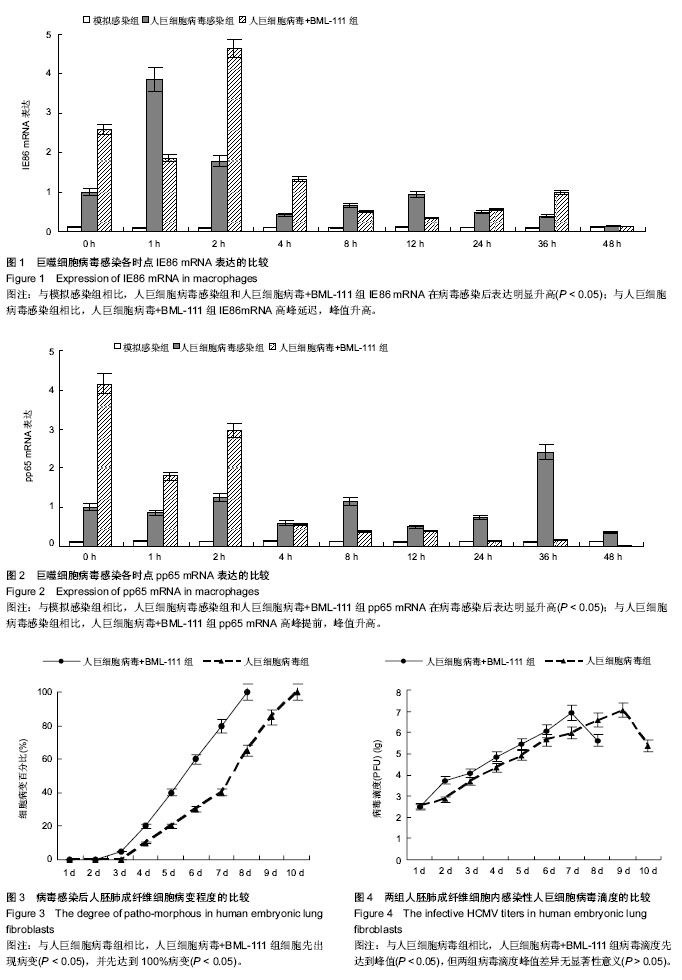| [1] Cannon MJ, Schmid DS, Hyde TB.Review of cytomegalovirus seroprevalence and demographic characteristics associated with infection.Rev Med Virol. 2010;20(4):202-213.
[2] 方峰.儿童巨细胞病毒性疾病的诊断与防治[J].实用儿科临床杂志,2010,25(10):701-703.
[3] Deere JD, Barry PA.Using the nonhuman primate model of HCMV to guide vaccine development.Viruses. 2014;6(4): 1483-1501.
[4] Ramanan P, Razonable RR.Cytomegalovirus infections in solid organ transplantation: a review.Infect Chemother. 2013; 45(3):260-271.
[5] Towler JC, Ebrahimi B, Lane B,et al.Human cytomegalovirus transcriptome activity differs during replication in human fibroblast, epithelial and astrocyte cell lines.J Gen Virol. 2012; 93(Pt 5):1046-1058.
[6] Straschewski S, Patrone M, Walther P, et al.Protein pUL128 of human cytomegalovirus is necessary for monocyte infection and blocking of migration.J Virol. 2011;85(10): 5150-5158.
[7] Revello MG, Gerna G.Human cytomegalovirus tropism for endothelial/epithelial cells: scientific background and clinical implications.Rev Med Virol. 2010;20(3):136-155.
[8] Serhan CN.Lipoxins and aspirin-triggered 15-epi-lipoxin biosynthesis: an update and role in anti-inflammation and pro-resolution.Prostaglandins Other Lipid Mediat. 2002; 68-69:433-455.
[9] Hu S, Mao-Ying QL, Wang J,et al.Lipoxins and aspirin-triggered lipoxin alleviate bone cancer pain in association with suppressing expression of spinal proinflammatory cytokines.J Neuroinflammation. 2012;9:278.
[10] Aksu K, Kurt E, Alatas Ö,et al.Effect of aspirin desensitization on T-cell cytokines and plasma lipoxins in aspirin-exacerbated respiratory disease.Allergy Asthma Proc. 2014;35(2): 148-155.
[11] Machado FS, Aliberti J.Role of lipoxin in the modulation of immune response during infection.Int Immunopharmacol. 2008; 8(10):1316-1319.
[12] Machado FS, Aliberti J.Impact of lipoxin-mediated regulation on immune response to infectious disease.Immunol Res. 2006;35(3):209-218.
[13] Divangahi M, Behar SM, Remold H.Dying to live: how the death modality of the infected macrophage affects immunity to tuberculosis.Adv Exp Med Biol. 2013;783:103-120.
[14] Divangahi M, Desjardins D, Nunes-Alves C,et al.Eicosanoid pathways regulate adaptive immunity to Mycobacterium tuberculosis.Nat Immunol. 2010;11(8):751-758.
[15] 陈晓红,舒赛男,刘兴楼,等.脂氧素受体激动剂对巨细胞病毒感染巨噬细胞的免疫负调节[J].中国组织工程研究, 2013,17(5): 886-893.
[16] Livak KJ, Schmittgen TD.Analysis of relative gene expression data using real-time quantitative PCR and the 2(-Delta Delta C(T)) Method.Methods. 2001;25(4):402-408.
[17] Cosme RS, Yamamura Y, Tang Q.Roles of polypyrimidine tract binding proteins in major immediate-early gene expression and viral replication of human cytomegalovirus.J Virol. 2009;83(7):2839-2850.
[18] 甄宏,方峰,舒赛男,等.大蒜新素抑制人巨细胞病毒即刻早期基因表达在抗人巨细胞病毒机制中的作用[J].中国循证儿科杂志, 2006,1(1):26-32.
[19] Isomura H, Stinski MF.Coordination of late gene transcription of human cytomegalovirus with viral DNA synthesis: recombinant viruses as potential therapeutic vaccine candidates.Expert Opin Ther Targets. 2013;17(2):157-166.
[20] Isomura H, Stinski MF, Murata T,et al.The human cytomegalovirus gene products essential for late viral gene expression assemble into prereplication complexes before viral DNA replication.J Virol. 2011;85(13):6629-6644.
[21] Kondo K, Xu J, Mocarski ES.Human cytomegalovirus latent gene expression in granulocyte-macrophage progenitors in culture and in seropositive individuals.Proc Natl Acad Sci U S A. 1996;93(20):11137-11142.
[22] Macias MP, Huang L, Lashmit PE, et al.Cellular or viral protein binding to a cytomegalovirus promoter transcription initiation site: effects on transcription.J Virol. 1996;70(6): 3628-3635.
[23] Petrik DT, Schmitt KP, Stinski MF.The autoregulatory and transactivating functions of the human cytomegalovirus IE86 protein use independent mechanisms for promoter binding.J Virol. 2007;81(11):5807-5818.
[24] Petrik DT, Schmitt KP, Stinski MF.Inhibition of cellular DNA synthesis by the human cytomegalovirus IE86 protein is necessary for efficient virus replication.J Virol. 2006;80(8): 3872-3883.
[25] Qian Z, Xuan B, Gualberto N,et al.The human cytomegalovirus protein pUL38 suppresses endoplasmic reticulum stress-mediated cell death independently of its ability to induce mTORC1 activation.J Virol. 2011;85(17): 9103-9113.
[26] Brune W. Inhibition of programmed cell death by cytomegaloviruses.Virus Res. 2011;157(2):144-150.
[27] Cam M, Handke W, Picard-Maureau M,et al. Cytomegaloviruses inhibit Bak- and Bax-mediated apoptosis with two separate viral proteins.Cell Death Differ. 2010;17(4): 655-665.
[28] Handke W, Luig C, Popovic B, et al.Viral inhibition of BAK promotes murine cytomegalovirus dissemination to salivary glands.J Virol. 2013;87(6):3592-3596.
[29] Fleming P, Kvansakul M, Voigt V,et al.MCMV-mediated inhibition of the pro-apoptotic Bak protein is required for optimal in vivo replication.PLoS Pathog. 2013;9(2):e1003192.
[30] Handke W, Krause E, Brune W. Live or let die: manipulation of cellular suicide programs by murine cytomegalovirus.Med Microbiol Immunol. 2012;201(4):475-486. |

